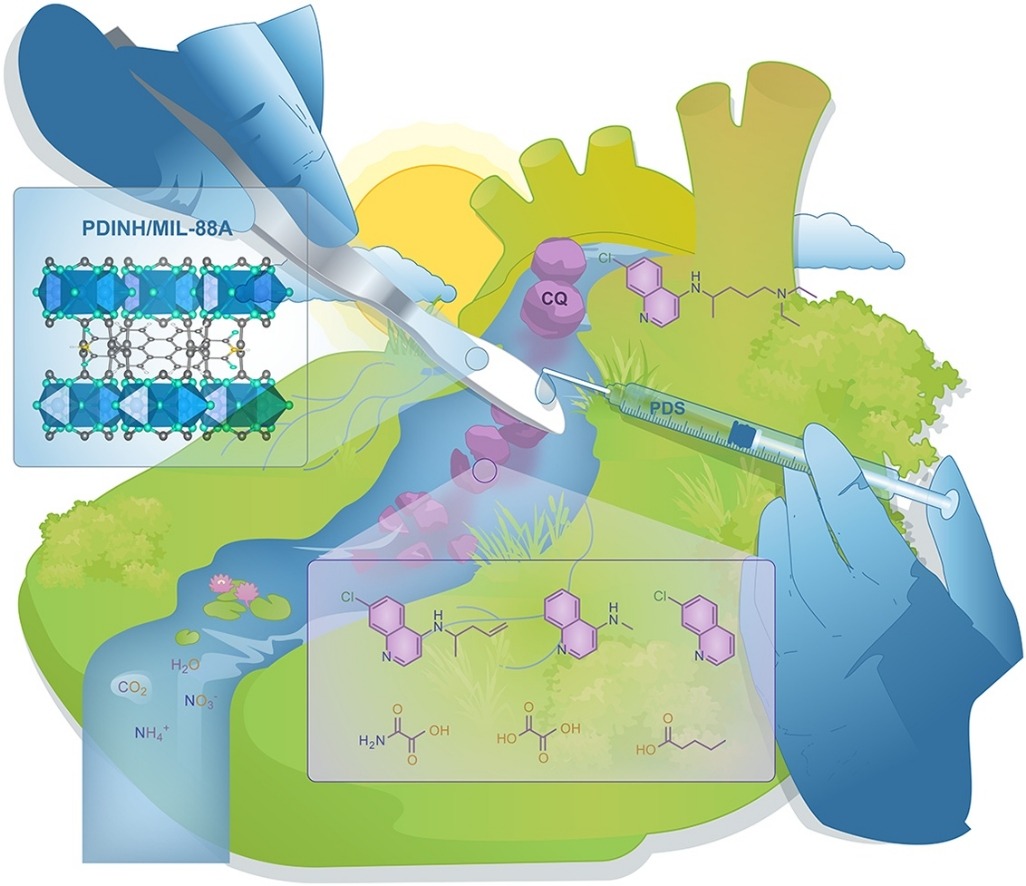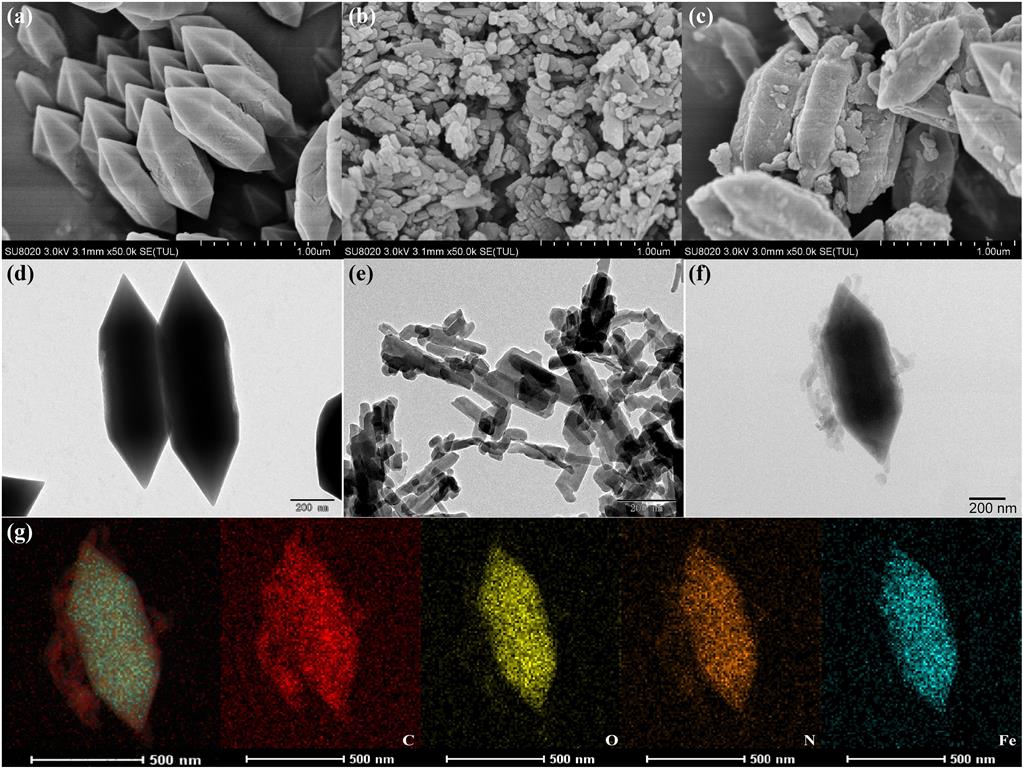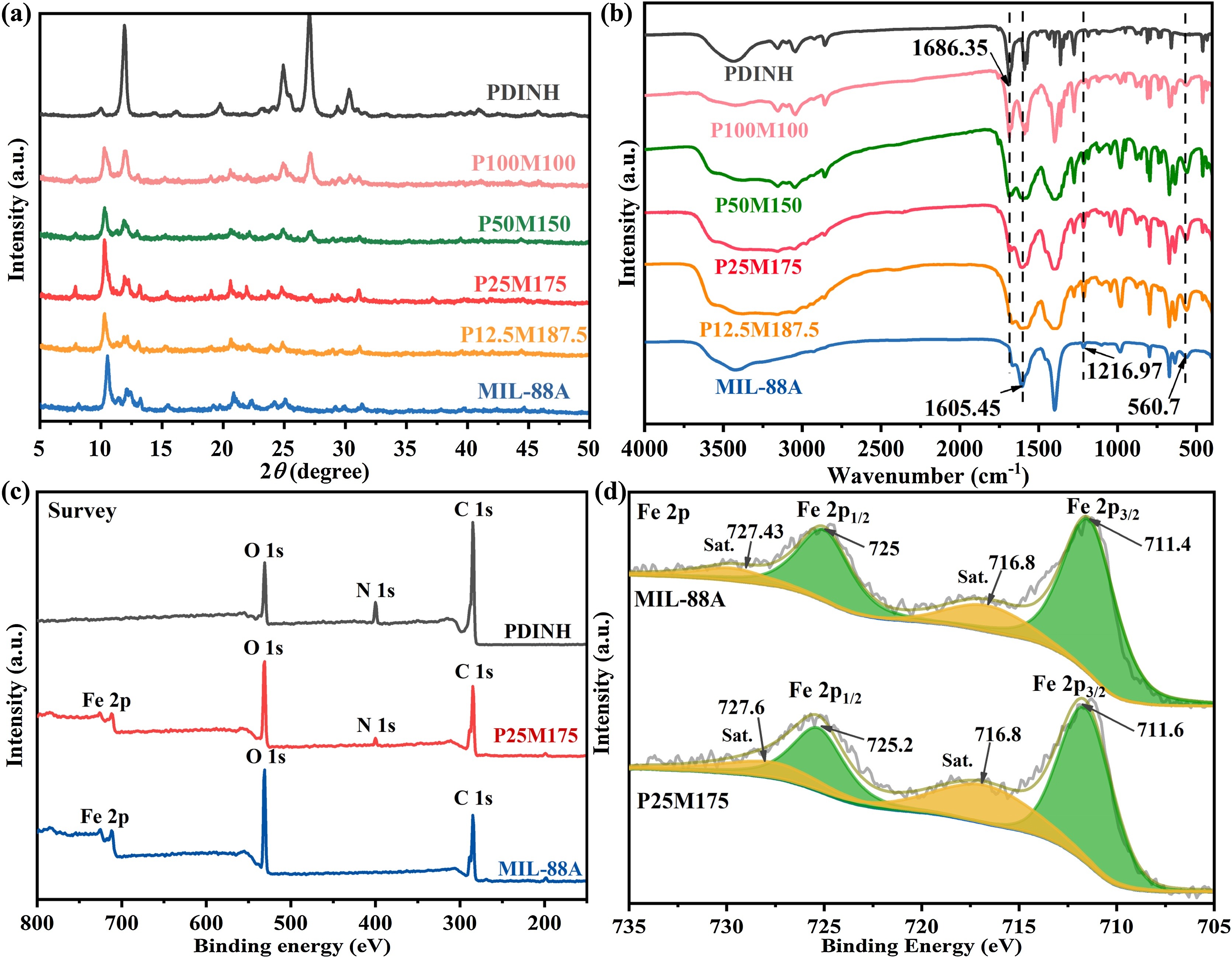Home >
News > Photocatalysis-activated SR-AOP over PDINH/MIL-88A(Fe) composites for boosted chloroquine phosphate degradation: performance, mechanism, pathway and DFT calculations
Photocatalysis-activated SR-AOP over PDINH/MIL-88A(Fe) composites for boosted chloroquine phosphate degradation: performance, mechanism, pathway and DFT calculations
Summary:
The authors from Beijing University of Civil Engineering and Architecture, Peking University, and Research Center for Eco-Environmental Sciences, Chinese Academy of Sciences developed PDINH/MIL-88A(Fe) composites (PxMy) with good charge separation, high catalytic activity, and excellent stability, achieving efficient degradation of chloroquine phosphate (CQ) in the field of environmental pollutant treatment via photocatalysis-activated sulfate radical-advanced oxidation processes (SR-AOP).

Background:
1. Chloroquine phosphate (CQ) is a persistent pharmaceutical pollutant posing environmental risks. Previous methods like electro-Fenton and single SR-AOPs have limitations, and Fe-containing MOFs suffer from fast electron-hole recombination.
2. The authors proposed fabricating PDINH/MIL-88A(Fe) composites via a facile ball-milling method, which synergistically enhances CQ degradation by activating peroxydisulfate (PDS) under visible light, with DFT calculations aiding in mechanism clarification.
Research Content:
1. Synthesis:
The authors synthesized PxMy composites using a ball-milling method. MIL-88A(Fe) was prepared by solvothermal reaction of FeCl₃·6H₂O and fumaric acid in DMF. PDINH/MIL-88A composites were obtained by ball-milling PDINH and MIL-88A (30 Hz, 5 min per run, 4 runs).
2. Characterizations:
1) BET and pore size distribution data are not explicitly provided for PxMy, but the composite shows enhanced surface properties suitable for catalytic reactions.
2) SEM/TEM tests show P25M175 (optimal composite) has MIL-88A spindle-like structures (500–1000 nm) wrapped by PDINH blocks (200–500 nm), with uniform element distribution.
3) Other tests: PXRD confirms the presence of both components; FTIR indicates characteristic groups (Fe-O, carboxyl, imide); XPS shows Fe³+ in MIL-88A; UV-vis DRS reveals band gaps of 2.75 eV (MIL-88A) and 1.78 eV (PDINH); Mott-Schottky plots confirm n-type semiconductor properties with conduction band potentials of -0.59 eV (MIL-88A) and -0.71 eV (PDINH) vs. NHE.
3. Application:
The material was tested in CQ degradation. Under optimal conditions (400 mg/L P25M175, 2.0 mM PDS, visible light, pH=5.04), 95.7% of 10 mg/L CQ is degraded within 30 min, with a rate constant (0.1329 min⁻¹) 5.99 and 4.29 times that of MIL-88A and PDINH, respectively. It shows good reusability (93.8% efficiency after 5 cycles) and stability.
4. Mechanism:
Under visible light, both components generate e⁻ and h⁺. e⁻ migrate from PDINH to MIL-88A, activating PDS to produce SO₄⁻•, •OH, •O₂⁻, and ¹O₂; h⁺ directly oxidize CQ. Fe³+/Fe²+ cycles in MIL-88A further activate PDS. DFT calculations confirm reactive sites (N atoms) in CQ, and degradation pathways involve side chain cleavage and oxidation, reducing toxicity.


Outlook:
This research provides an efficient method for CQ degradation using PDINH/MIL-88A composites, offering insights into photocatalysis-activated SR-AOP mechanisms and promoting MOF-based materials for environmental remediation.
Photocatalysis-activated SR-AOP over PDINH/MIL-88A(Fe) composites for boosted chloroquine phosphate degradation: performance, mechanism, pathway and DFT calculations
Authors: Xiao-Hong Yi, Haodong Ji, Chong-Chen Wang, Yang Li, Yu-Hang Li, Chen Zhao, Ao Wang, Huifen Fu, Peng Wang, Xu Zhao, Wen Liu
DOI: 10.1016/j.apcatb.2021.120229
Link: https://www.sciencedirect.com/science/article/pii/S0926337321003556
The above review is for academic progress sharing. For any errors or copyright issues, please contact us for correction or removal.


